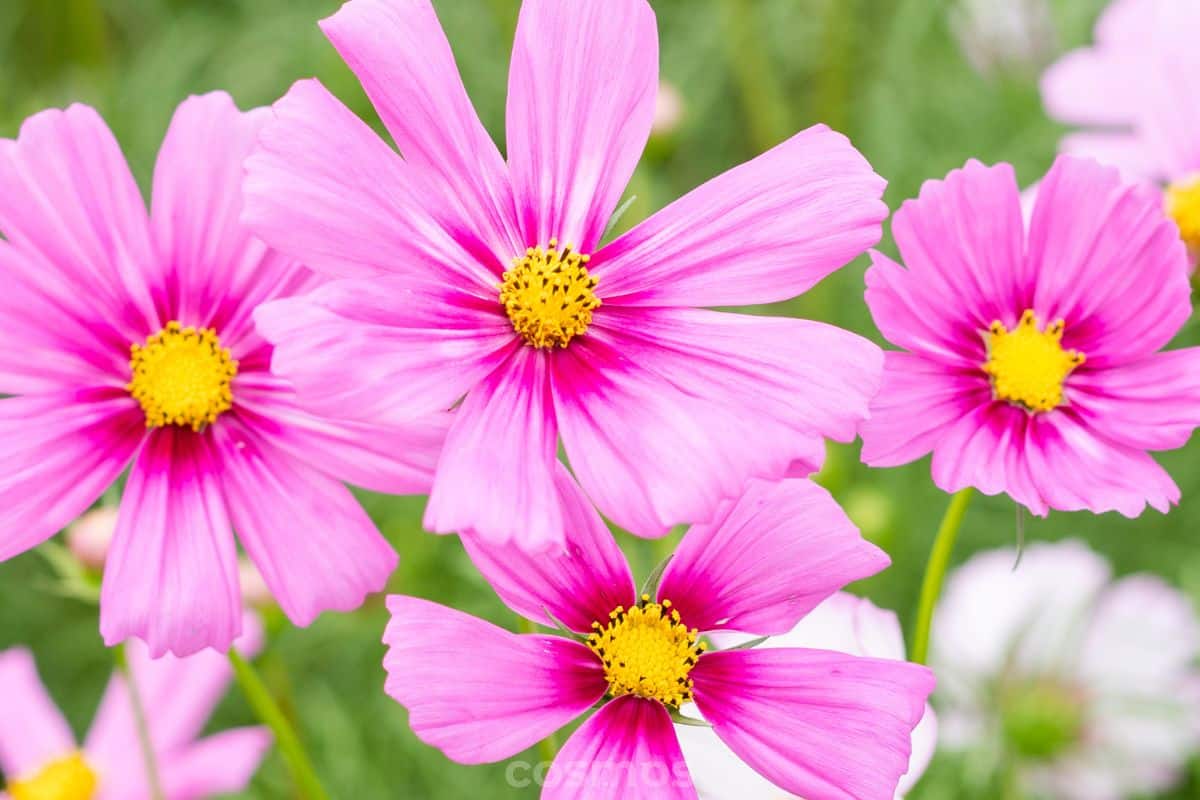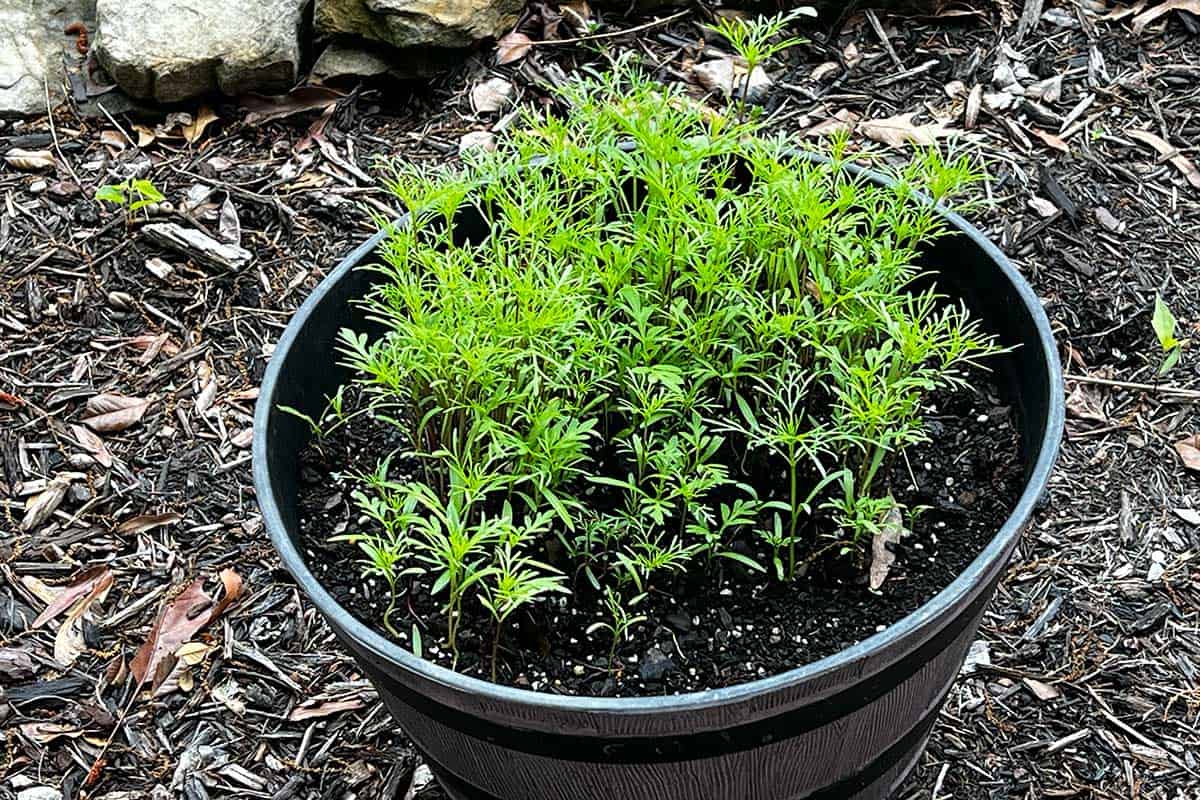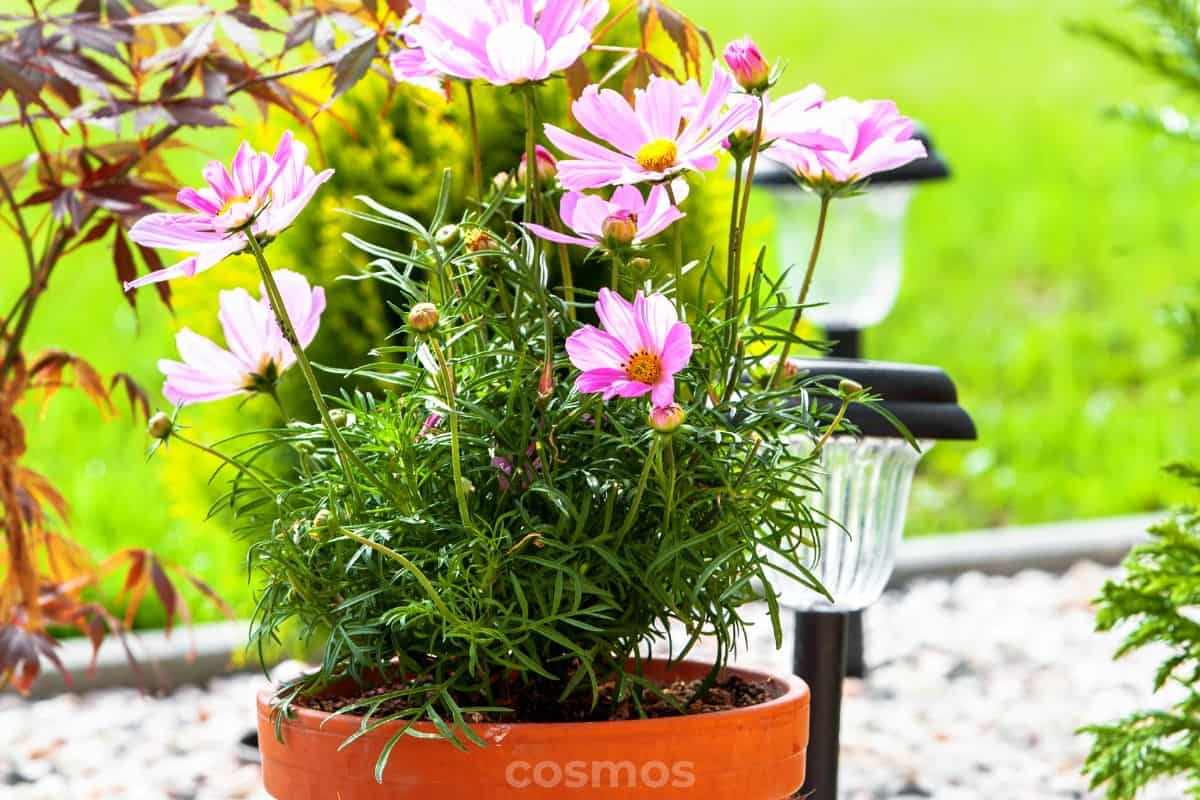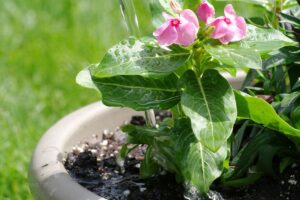This page may contain affiliate links. If you click and buy, we might get a small commission at no cost to you.
Learning how to grow cosmos in pots is a great way to add color and pollinator activity to small gardens, patios, or even balcony spaces. Cosmos are light, feathery, and surprisingly low-maintenance, thriving in hot weather and poor soil with minimal care.
We’re growing cosmos in pots again this year alongside a raised bed of zinnias, and they’ve already proven to be a colorful, easygoing addition. In this article, I’ll walk you through everything you need to know… from choosing the right container to getting the most blooms all season long.
Article summary
- Cosmos are one of the easiest flowers to grow in pots or containers
- They thrive in full sun and don’t need rich soil or constant care
- We’re growing them in pots this year alongside our raised bed garden
- Learn which pots to use, how to plant cosmos from seed, and tips to keep them blooming
1. Choose the right type of cosmos
The most common cosmos for container gardening is Cosmos bipinnatus, also known as garden cosmos. These produce delicate, daisy-like flowers on tall, wispy stems. Some varieties can grow up to 4 feet tall, which makes them stunning in a large pot, but a little planning goes a long way.
If you’re working with smaller containers or tighter spaces, try dwarf varieties like ‘Sonata’ or ‘Cosmic Orange’ which top out around 12 to 24 inches. These hold up better in wind and won’t require as much staking.
2. Pick a container with good drainage
Cosmos don’t like wet feet, so drainage is key. Choose pots with holes in the bottom, ideally 10 inches deep or more to give roots room to spread. If you’re reusing nursery pots or buckets, make sure water doesn’t pool at the bottom.
We used basic black nursery pots and a few decorative ceramic planters this year. Both have worked great, just avoid any container that stays soggy, especially in spring when rain is frequent.
3. Use lightweight potting mix (not garden soil)
Cosmos prefer loose, well-draining soil. A basic potting mix with perlite or sand works well. Don’t use heavy garden soil in your containers, it holds too much water and compacts too easily.

They don’t need a lot of nutrients either, so avoid fertilizing too heavily. Overfeeding can lead to tall, floppy plants with fewer blooms. If you want to mix in compost, keep it light and balanced.
4. Plant from seed or transplant young plants
Cosmos are easy to grow from seed. You can direct-sow into pots after the last frost, or start them indoors and transplant once the weather warms up. We planted ours after mid-April, and they took off quickly once the days stayed consistently warm.
If starting from seed, press them just lightly into the soil as they need light to germinate. Keep the soil moist but not soaked, and you should see sprouts in 5 to 10 days.
5. Place in full sun and water when dry
Cosmos love sun so aim for 6 to 8 hours of direct sunlight a day. They’ll stretch and get leggy if grown in partial shade. We keep ours on the patio where they get strong midday and afternoon sun, and they’re thriving.
Water when the top inch of soil feels dry. In hot summer weather, that might be every 2–3 days. Avoid overwatering… cosmos are drought-tolerant once established.

6. Support tall varieties if needed
If you’re growing full-size cosmos, you may need to stake them once they get taller than 18 inches. We’ve used small bamboo stakes and even repurposed tomato cages to keep them from flopping in heavy rain or wind.
Shorter varieties usually hold their shape well, especially in grouped plantings or snug containers.
7. Deadhead spent blooms to encourage more flowers
Once cosmos begin blooming, the key to keeping them going is regular deadheading. This means snipping off faded or dried-up flowers so the plant doesn’t waste energy producing seeds. Instead, it keeps pushing out fresh new blooms.
We make a habit of checking the pots every few days and removing spent flowers by pinching them off or using small garden scissors. It only takes a minute or two, and it makes a big difference in how long the plants stay full and colorful.

Why people love growing cosmos in pots
Cosmos are not only easy to grow, they’re also great for attracting pollinators. Bees and butterflies visit them often, and hummingbirds will often drop in too, especially if you have feeders or other nectar-heavy flowers nearby. Their open blooms and long-lasting flowers make them a great addition to any pollinator garden.
They also pair beautifully with zinnias. While zinnias provide bold color and upright structure, cosmos add softness, movement, and a more natural, wildflower feel. The two together create a balanced, layered look in raised beds or containers, and both offer months of color with minimal effort.



